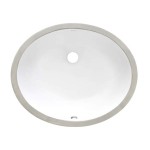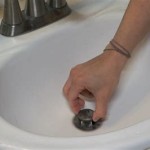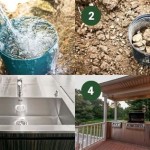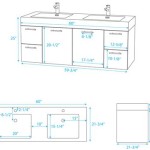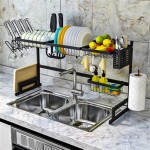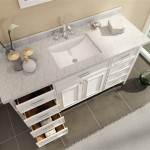Understanding the Feasibility and Implications of Connecting Sink Drains to Washing Machines
The concept of connecting a sink drain directly to a washing machine drain line, while seemingly unconventional, raises practical and plumbing-related questions. This arrangement might be contemplated for various reasons, including space constraints, perceived efficiency gains, or a desire to simplify plumbing modifications during renovations. However, the viability and legality of such a setup depend on a multitude of factors, including local plumbing codes, existing infrastructure, and the potential for backflow contamination.
It's essential to approach this subject with a thorough understanding of the underlying plumbing principles and potential risks involved. A seemingly simple plumbing alteration can have unforeseen consequences if not carefully considered and implemented in accordance with established regulations and best practices. This article will explore the various aspects of connecting a sink drain to a washing machine drain, including the potential benefits, drawbacks, and code compliance considerations.
Potential Benefits of Utilizing the Washing Machine Drain
In some instances, connecting a sink drain to a washing machine drain might offer certain perceived advantages. These potential benefits must be carefully weighed against the potential drawbacks and regulatory hurdles. Space optimization is a common motivator. In cramped areas, such as apartments or small laundry rooms, utilizing an existing washing machine drain line for a sink can eliminate the need for additional drainage pipes, thereby saving space and minimizing construction. This is particularly appealing when renovating or adding a sink in an area not originally designed for plumbing. Cost saving might also be a factor. If access to an existing drain line is easier and less expensive than running a separate drain line for the sink, homeowners may consider this option. However, the initial cost savings could be offset by potential problems if the connection is not properly executed or fails to meet code requirements.
Reduced plumbing work is another possible benefit. Connecting to an existing drain line can simplify the plumbing process, potentially reducing the time and complexity of the installation. This can be particularly attractive to DIY enthusiasts or those looking to minimize labor costs. Finally, water conservation can be a factor. While not a direct benefit of connecting the drains, it might be argued that a combined drainage system slightly reduces the overall amount of piping needed, potentially minimizing water loss due to pipe length and internal surface area. However, this impact is likely negligible and pales in comparison to other water conservation methods like using low-flow fixtures.
Potential Drawbacks and Risks Associated with Combined Drainage
Despite the aforementioned potential benefits, combining sink and washing machine drains presents several significant drawbacks and risks. The most critical concern is the potential for backflow. Backflow occurs when wastewater from the washing machine flows back into the sink, potentially contaminating the sink area with detergents, dirt, and other pollutants. This poses a health risk, especially if the sink is used for food preparation or other sanitary purposes. Proper backflow prevention measures, such as air gaps or check valves, are crucial to mitigate this risk. Without these precautions, the connection is not only unsanitary but also potentially illegal.
Drainage capacity limitations can also be a problem. Washing machines discharge a large volume of water in a short period, which can overwhelm the drainage system if it is not adequately sized. Connecting a sink to the same drain line can exacerbate this issue, increasing the risk of clogs, backups, and overflows. The existing drain line might not be designed to handle the combined flow rate of both appliances, leading to slow drainage and potential plumbing problems. Furthermore, grease and food particles from the sink can accumulate in the drain line, contributing to clogs and odors. These substances can interact with detergents from the washing machine, creating a sticky residue that further restricts flow and necessitates frequent drain cleaning.
Another challenge is related to venting. Adequate venting is essential for proper drainage in any plumbing system. Vents allow air to enter the drainpipes, preventing suction and ensuring smooth flow. Connecting a sink and washing machine to the same drain line might compromise the existing venting system, leading to siphoning of water from traps and the release of sewer gases into the building. Insufficient venting can also cause slow drainage and gurgling sounds as air struggles to enter the pipes. Finally, code compliance is a major consideration. Most plumbing codes strictly regulate how drains can be connected and require specific backflow prevention measures and venting configurations. Connecting a sink and washing machine drain without proper permits and inspections can result in fines, mandatory modifications, or even legal action. Homeowners should always consult with a licensed plumber and local building officials to ensure compliance with all applicable codes and regulations.
Plumbing Code Considerations and Best Practices
Plumbing codes, such as the Uniform Plumbing Code (UPC) or the International Plumbing Code (IPC), dictate the permissible methods for connecting fixtures to drainage systems. These codes are designed to protect public health and safety by preventing backflow, ensuring adequate drainage capacity, and maintaining proper venting. Before connecting a sink drain to a washing machine drain, it is imperative to consult with a qualified plumber who is familiar with local plumbing codes and regulations. The plumber can assess the existing plumbing system, determine the feasibility of the connection, and recommend appropriate backflow prevention measures and venting configurations. The plumber can also obtain the necessary permits and inspections to ensure that the work is performed in compliance with all applicable codes.
Backflow prevention is a critical aspect of this type of connection. An air gap is generally considered the most effective method of backflow prevention. An air gap creates a physical separation between the sink drain and the washing machine drain, preventing wastewater from flowing back into the sink. Another option is a check valve, which allows water to flow in one direction only. However, check valves are less reliable than air gaps and require regular maintenance to ensure proper function. The code requires the correct size of piping. The drain line must be large enough to accommodate the combined flow rate of the sink and washing machine. Undersized drain lines can lead to clogs, backups, and overflows. The code specifies minimum pipe sizes for various fixtures and appliances, and these requirements must be strictly adhered to.
Proper venting is also crucial. The venting system must be designed to prevent siphoning of water from traps and the release of sewer gases into the building. This might require installing additional vents or modifying the existing venting system. The materials used for the connection must also be code-compliant. Only approved plumbing materials, such as PVC or copper, should be used for drain lines and fittings. Using substandard materials can lead to leaks, corrosion, and other problems. Finally, it's important to adhere to the requirements of Trap arms and trap types. Each fixture should have a properly sized and installed P-trap to prevent sewer gases from entering the building. The trap arm, the horizontal distance between the trap and the vent, must also comply with code requirements. Deviations from these requirements can create a potential health hazard.

Dirty Water In The Drum Hoover Advice Centre

10 Tips For How To Keep Drains From Clogging At Home
Can We Plumb A Washing Machine Drain Into Sink Quora

9 Blocked Sink Waste Problems Cures Q A

Urgent Help Sink Water Coming Out Of Washing Machine And Vice Versa Mumsnet

Why Is My Washing Machine Backing Up Into Kitchen Sink Yes

Washing Machine Drain Under Kitchen Sink

How To Fix Water Coming Up Through Your Sink From The Washing Laundry Machine Dishwasher

Diy Laundry Sink Installation

Washing Machine Waste Backing Up To Kitchen Sink Youtube
